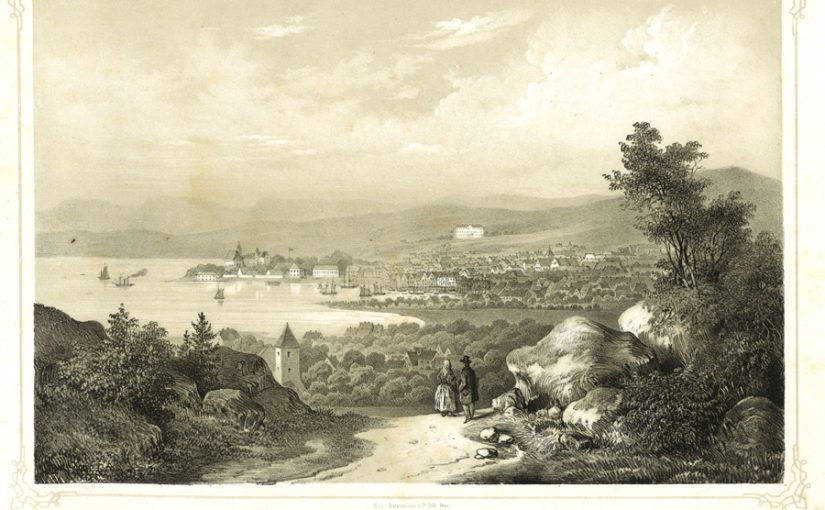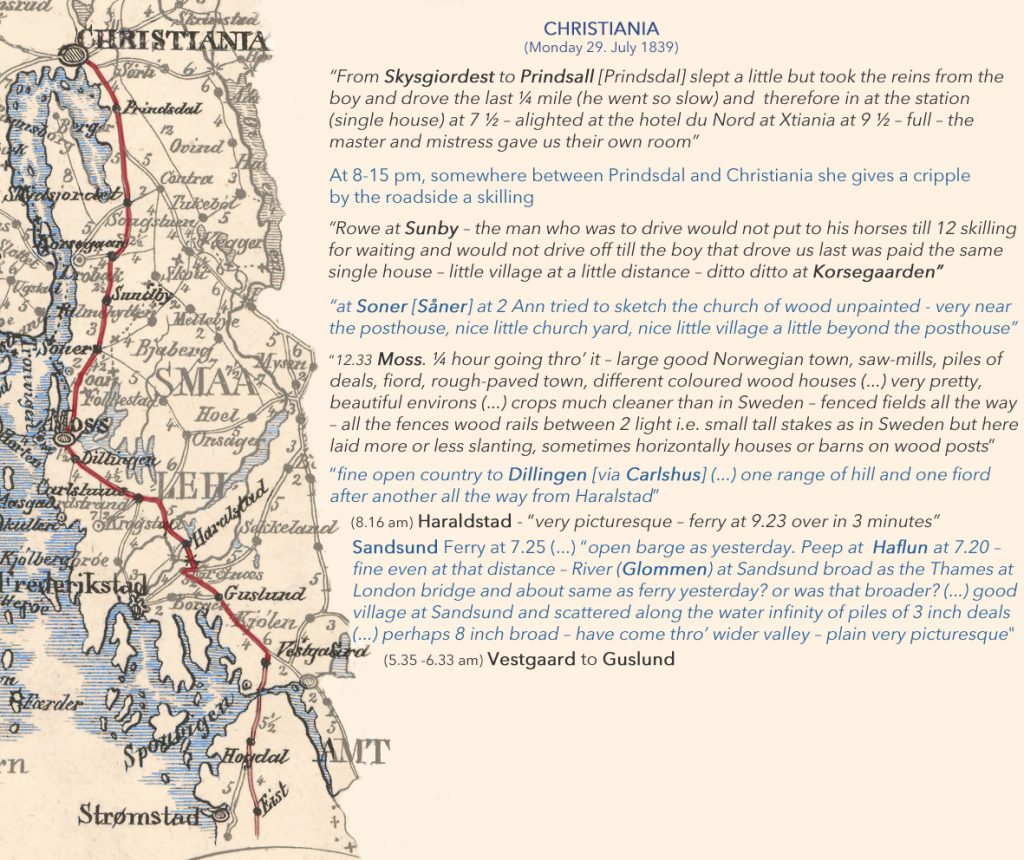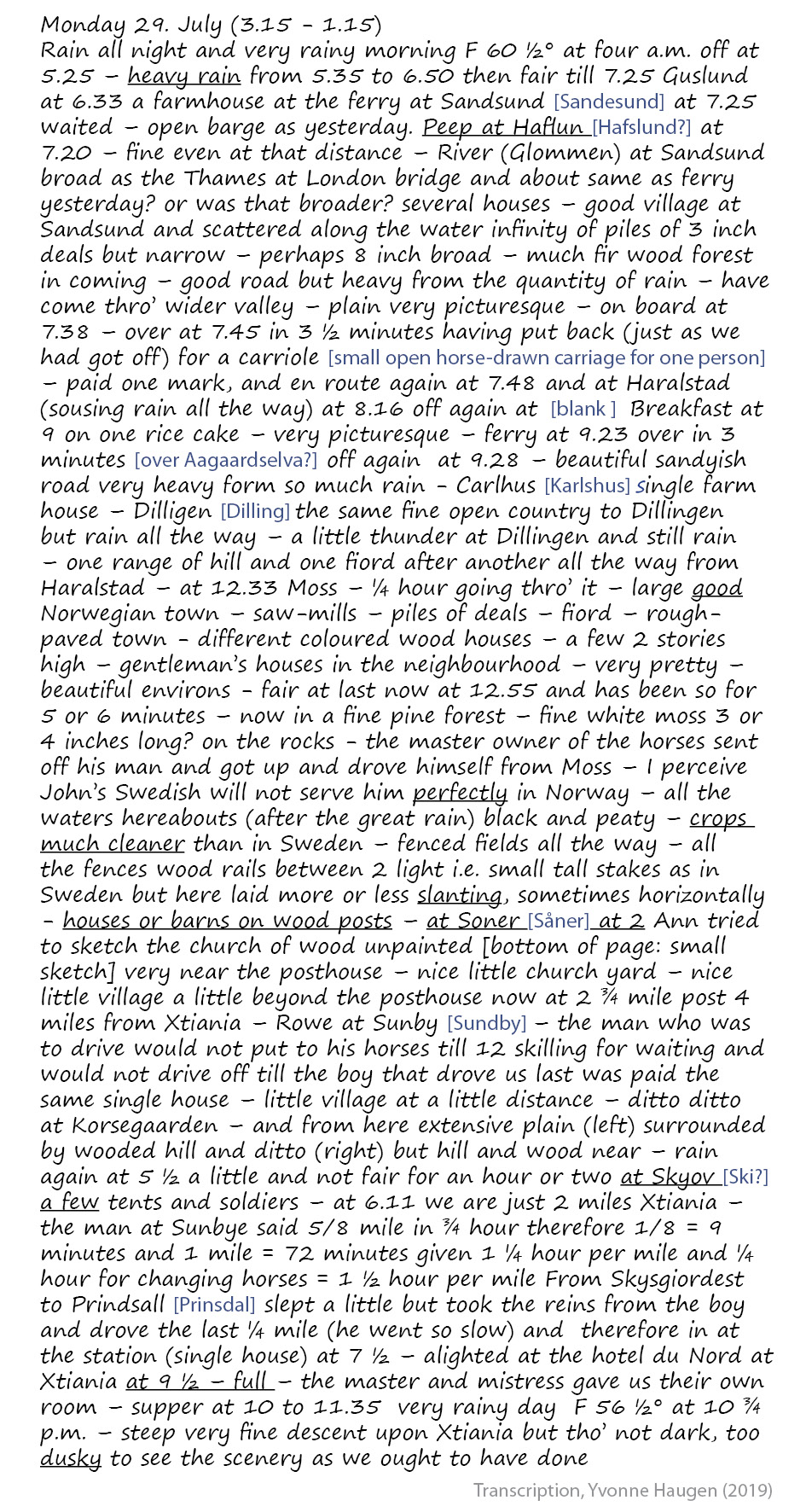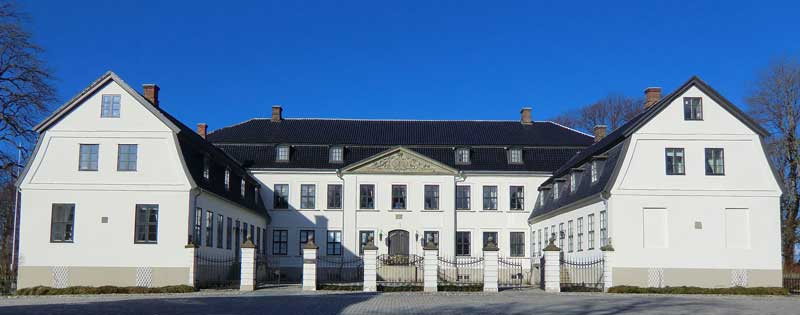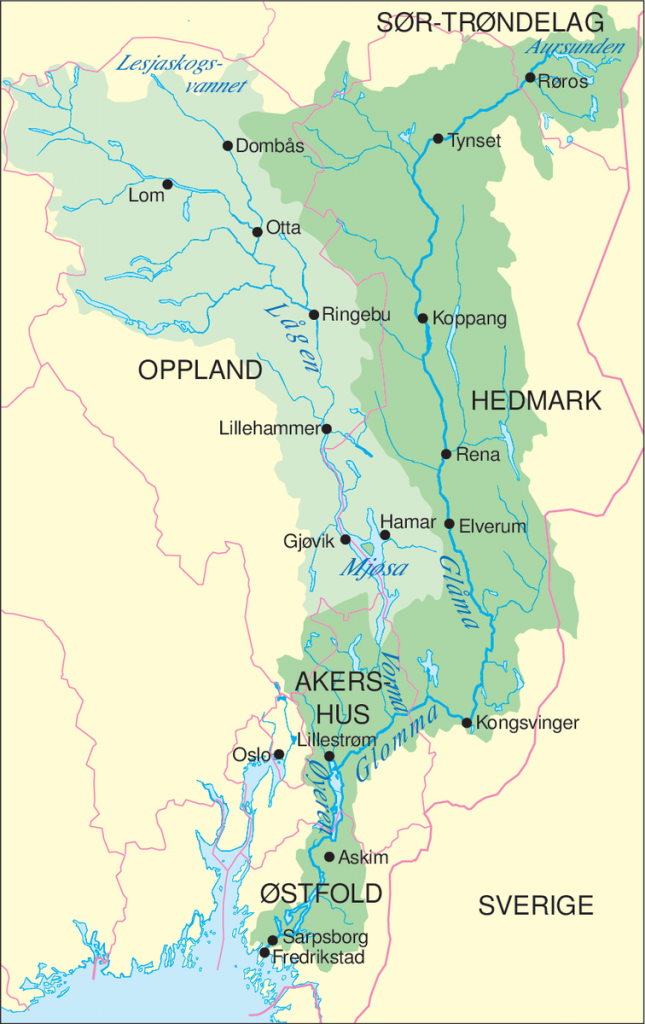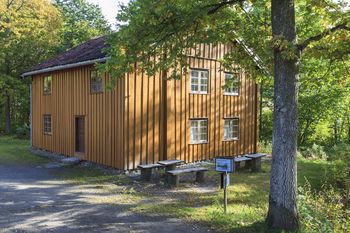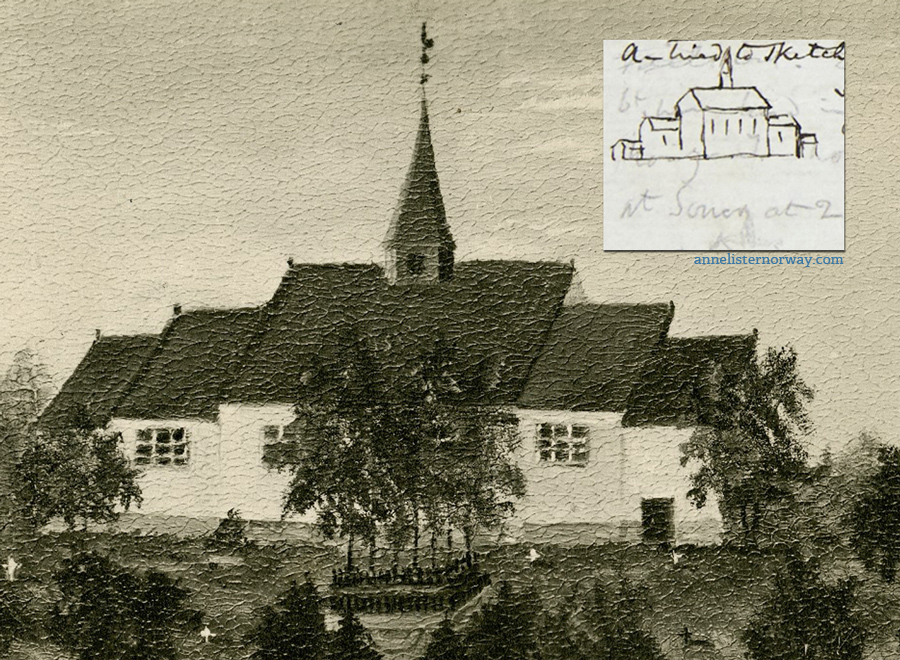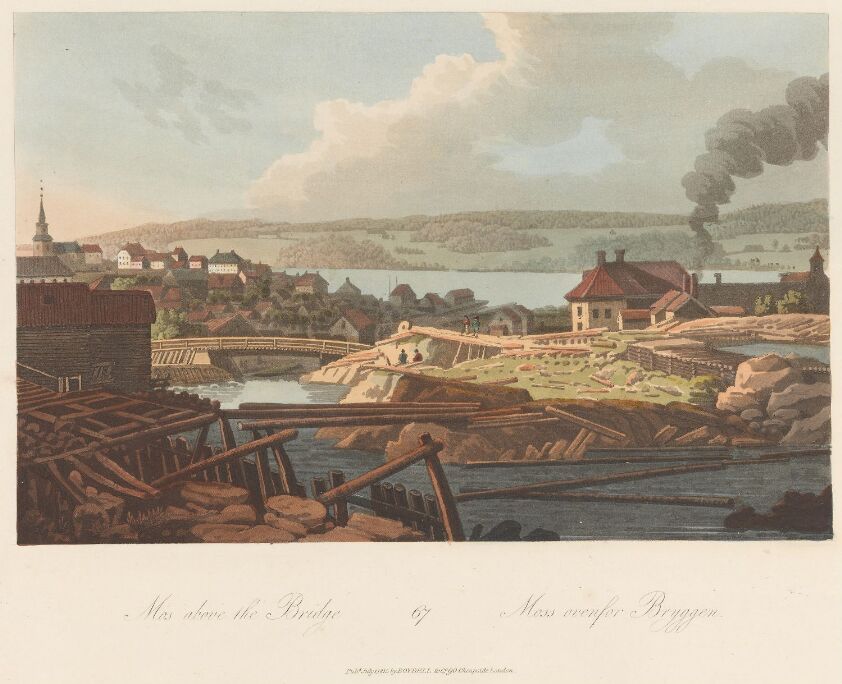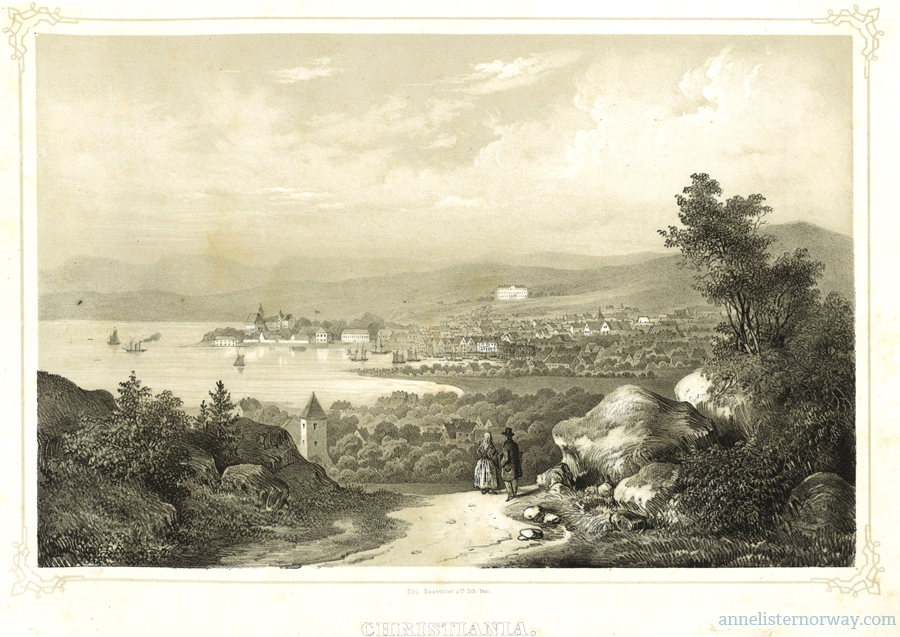Sunday 28. July. (3.30 – 8.30)
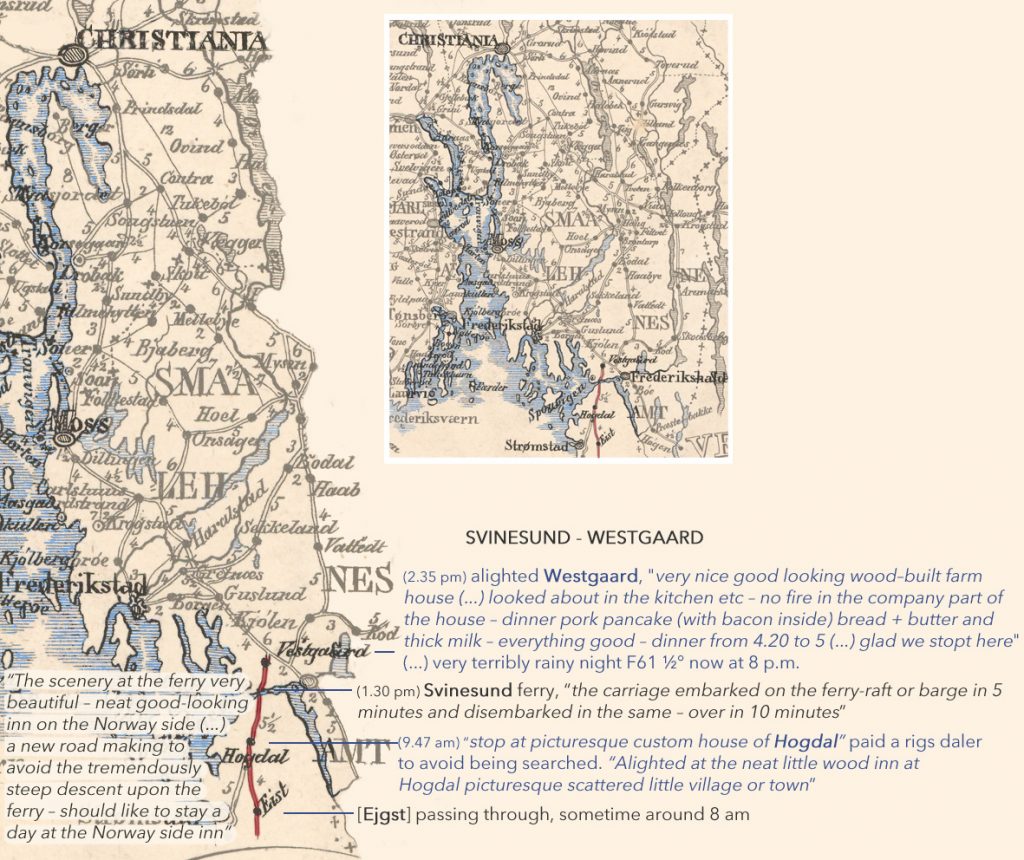
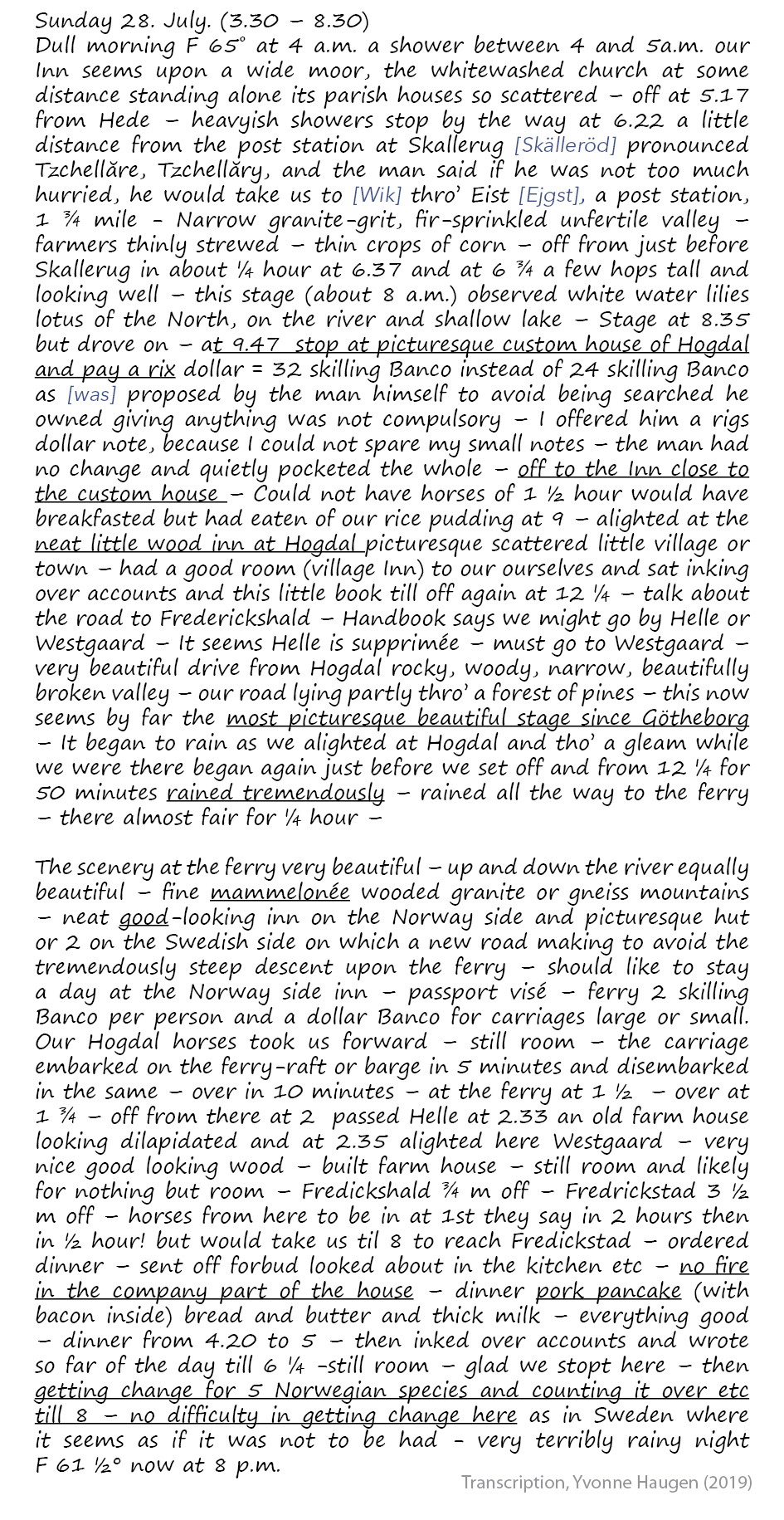
Places
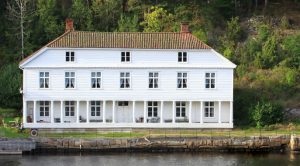
Svinesund, Søylegården
The neat good looking inn on the Norway side is likely Søylegården, that still stands today.
Read more about Svinesund and Søylegården
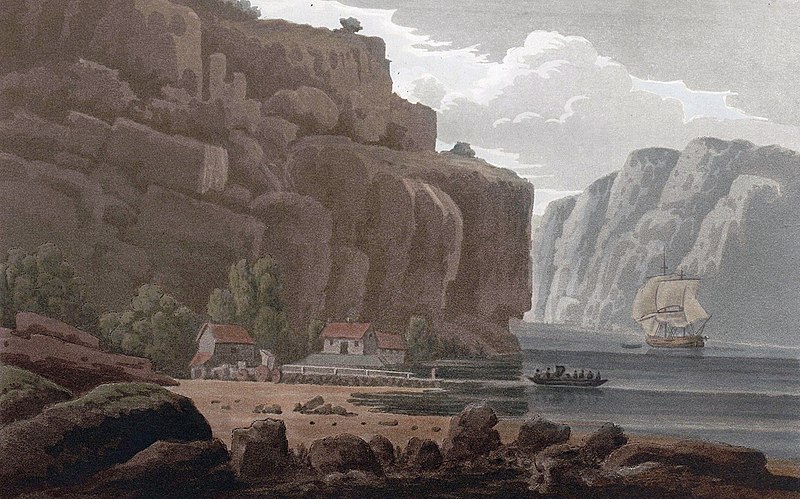
The ferry at Svinesund Norway side
(ca 1800 by J.W. Edy)
More…
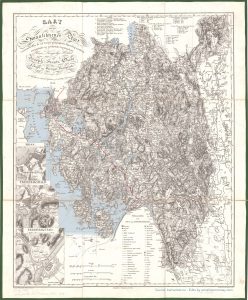
Detailed map of route from Svinesund to Soner [Såner]
Smaalehnenes Amt, Ramm & Munthe (1826)
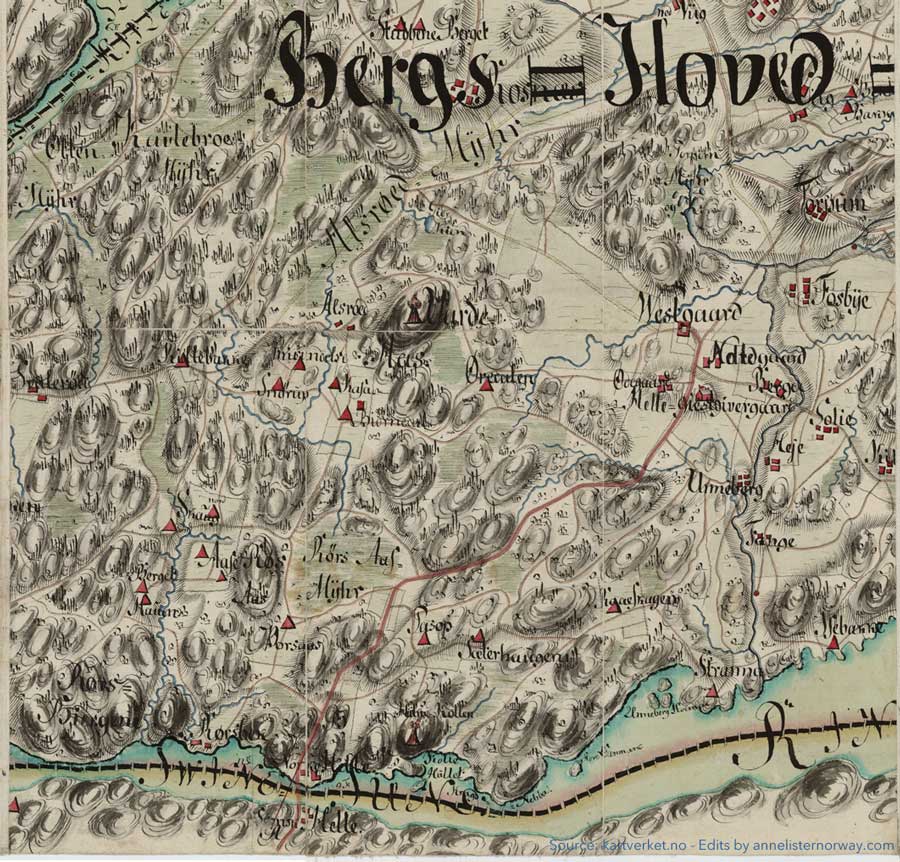
Westgaard (and Helle)
A quite lovely handpainted map from 1804 (source: kartverket) shows both Helle (“supprimée”) and Westgaard not far from Svinesund.
(see bigger version on this page)
Food

Pork Pancakes
‘Fleskepannekake’ is a pancake fried together with diced salty bacon. Today it’s often eaten with either syrup or a blueberry jam on top…
get the recipe
Other
Handbook
“Handbook says we may go by Helle or Westgaard -“
Anne Lister mentions, while in Sweden, buying a little Norway road book (1829) and later writes to Mariana to “buy the ‘Handbook for Northern Europe‘, published by Murray last summer” (i.e. 1838) if she would “wish to pursue us more minutely thro’ our wanderings” (Letter to Mariana Lawton, Moscow November 18, 1839)
